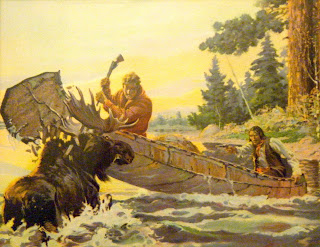Back in 1993, when I was struggling to make a living as a cowboy folk artist, a good friend by the name of Gary Parsons invited me to share his booth at the "Cowboy Christmas Show" at Cashman Field during the National Finals Rodeo (NFR) . Attending the show was a huge commitment for me because it was a ten day event, which meant I'd have to double up on my work load when I returned home.
I had met Gary a couple years earlier through an introduction from the good folks at the Gene Autry Museum in Los Angeles. We became instant friends, and I spent a lot of time with him over the next several years. Gary was in the cowboy fashion business. He sold and or brokered all sorts of interesting things, such as fancy boots and shirts, reproduction collectibles (like a Roy Rogers watch), and very sophisticated line of silver buckles and jewelry marketed under the name of "Hollywood Classics."
I have always been a big rodeo fan, but had never attended the finals before, so I was really looking forward to the show. Better yet, Gary was a very popular guy who knew just about everybody in the cowboy world. When I got to Cashman Field I learned that Gary had also invited several celebrities to share his both: Monty Montana, who had just published his biography "Not Without My Horse" and was sharing the booth to promote it; Sharon Camarillo, a four-time NFR barrel- racing qualifier, was selling her bits and saddles; Tony Stanton, the owner of Sunset Trails Silversmiths, was showing his wonderful silver; and Barbara Jones, a designer of Western fashions from Bozeman, Montana, had her fashion line. Looking back I guess my Lure of the Dim Trails furniture was a pretty good fit.
During those ten days at Cashman Field, I met all sorts of interesting folks. One was Jim Shoulders (a hero of mine in the 1950s) who won five all-around Pro Rodeo Cowboy Association championships, seven bull riding championships, and four bareback riding crowns. Another was Baxter Black, American cowboy poet philosopher, former large-animal veterinarian, and radio commentator. He had me in stitches from the moment he thrust his hand forward with his famous opening line, "Howdy, I'm Baxter Black. " I also met Leo Camarillo, 21 times NFR team-roping qualifier, six times NFR Average Winner; four-time World Champion Team Roper; one time All-Around Champion.
It sure was a thrill to watch 83-year-old Monty standing on his horse spinning a giant loop at the rodeo opening, and then spend all the next day swapping yarns with him. Monty passed away fours years later, and Gary (I just learned) passed away in 2005. They don't make 'em like those two anymore.
 |
| Don and Kathy Edwards with Gary Parsons at my display during the Cody Old West Show 1997 |



















































